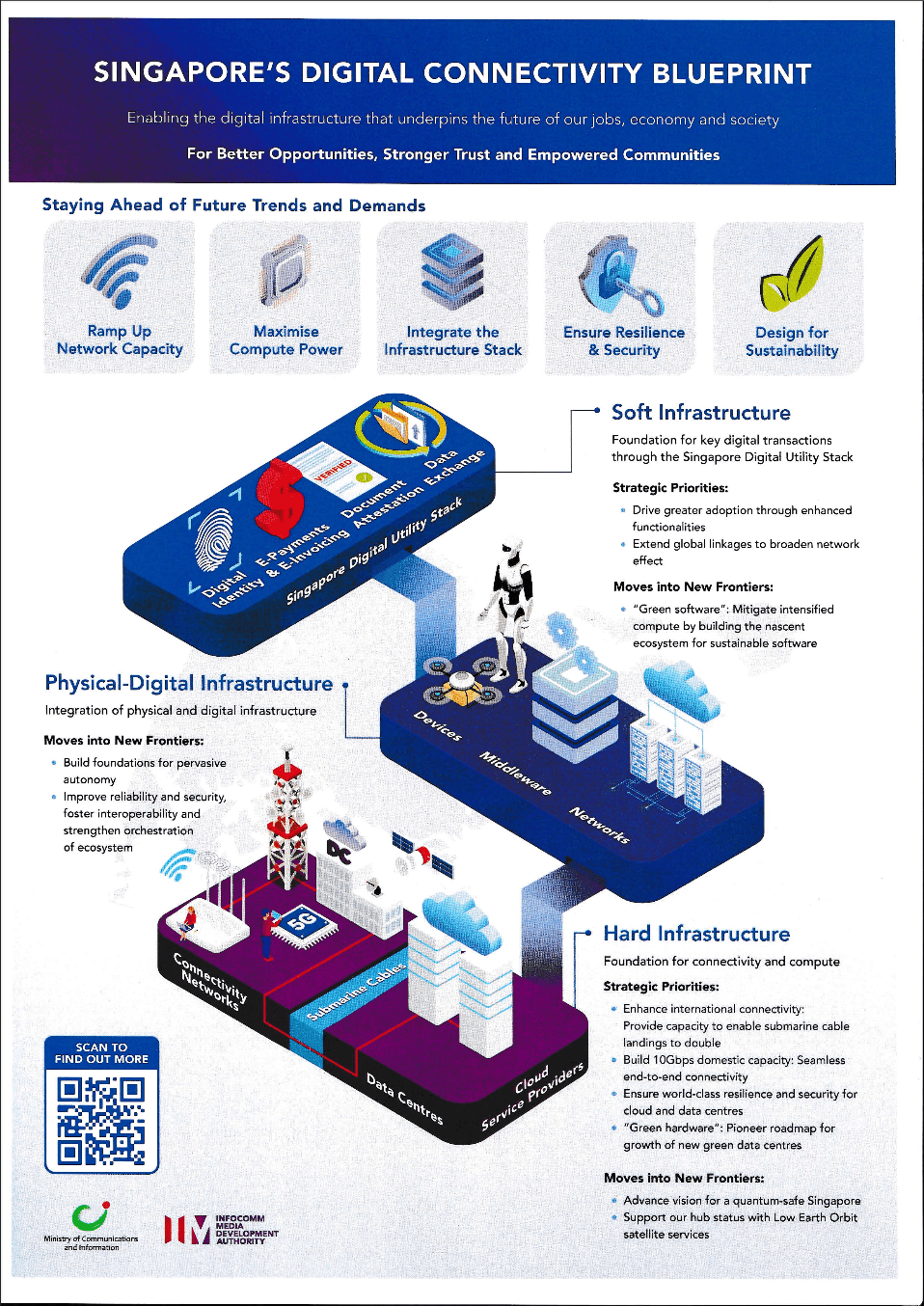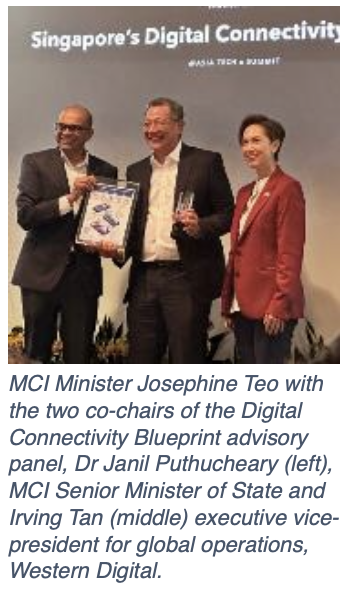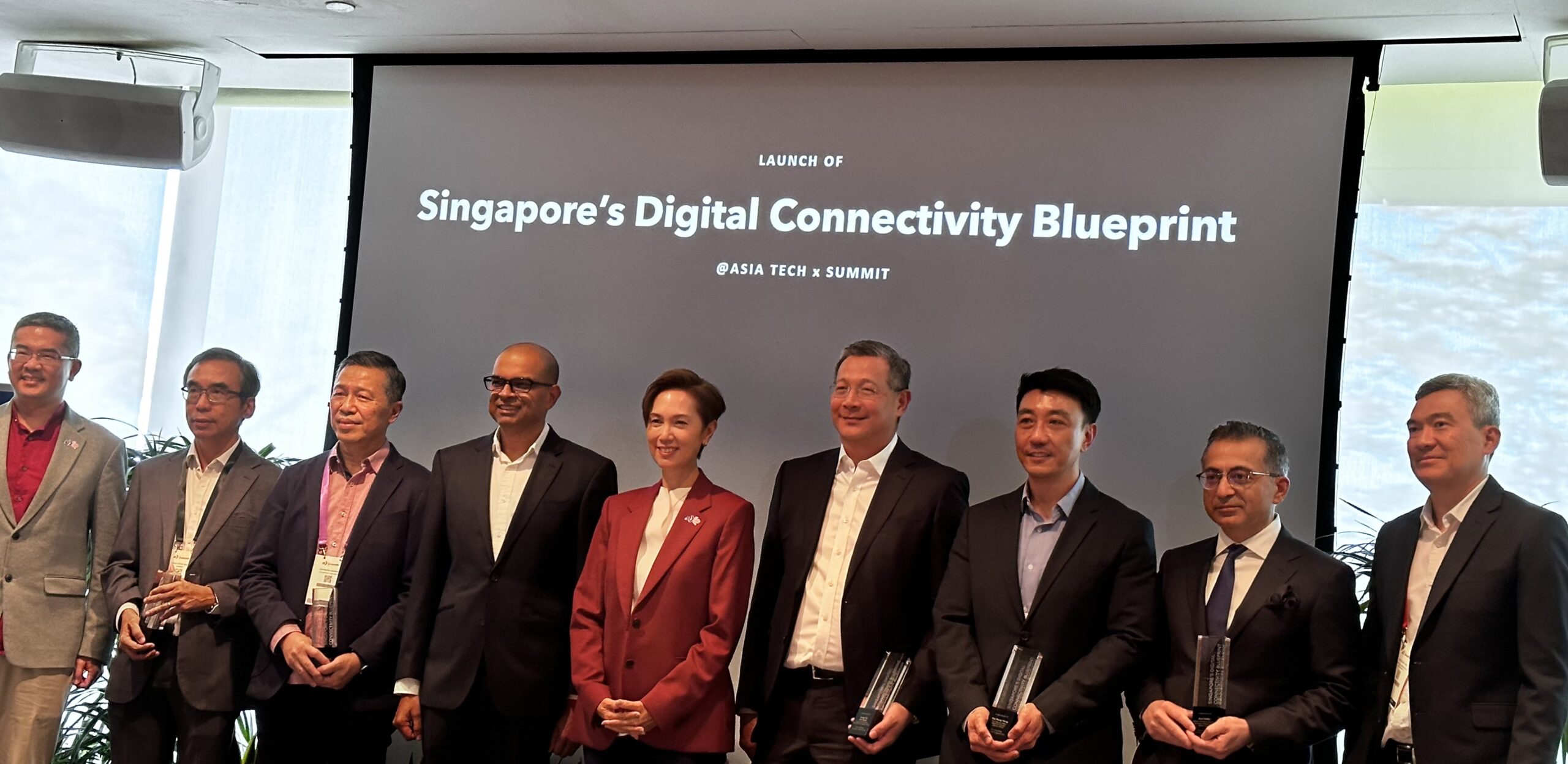Singapore is prepping to rollout a new digital infrastructure to enable the city state to stay ahead of future technology trends and demands and to accelerate the growth of the digital economy.
Called the digital connectivity blueprint, it will provide the foundation for businesses to reap opportunities from the development of new innovations. New jobs will be created too. There will also be greater digital trust security and resilience efforts are further fortified.
The ambitious blueprint which is slated to roll out later this year, will integrate the behind-the-scenes digital foundation comprising the hard infrastructure, soft infrastructure and the physical-digital infrastructure.
A holistic and expansive roadmap, it will be a key pillar supporting Singapore’s Smart Nation efforts. The key initiatives include doubling down on submarine cable capacity, increasing home broadband speed to 10Gbps, ensuring world-class security and digital trust and pushing the sustainability envelope for the growth of green data centres.
Likely to be rolled out in the next 10 years, the blueprint was unveiled on June 5 by Josephine Teo, Minister of Communications and Industry (MCI) at an event during the annual Asian Tech x Singapore 2023 conference.
Teo said most of the initiatives outlined in the roadmap will be driven by the private sector.Significant resources will be required to bring the plans in the blueprint to fruition. Two big ticket items totalling around S$20 billion in investments are the building of new submarine cables and green data centres to provide international connectivity and computing power.
Recognising that building a digital connectivity foundation often requires long lead times to build capacity while demand grows in spurts, Singapore elected for a balance between just-in-time investments in digital infrastructure, which will be hard to insist, and just-in-case investments, which will be too costly.
“Instead, we aim to steadily advance our readiness level to always be at a place of highest potential,” said Teo.
The digital connectivity blueprint sets out five strategic priorities:

1. Provide capacity to enable submarine cable landings to double within the next 10 years. Singapore is already a leading submarine cable hub globally in terms of number of cables landed and total capacity. It will intensify the use of space and expand the landing sites. This effort can potentially bring about S$10 billion worth of submarine cable investments.
2. Build seamless end-to-end 10Gbps domestic connectivity in the next five years across homes, offices and on-the-go.
3. Ensure world-class resilience and security. The government will work with cloud and data infrastructure providers like cloud and data centre companies to enhance the transparency of and accountability for resilience and security risks.
4. Pioneers a roadmap for new green data centres and push the sustainability envelope. Growth of new green data centres is likely to require investments of S$10 billion to $12 billion.
5. Drive greater adoption of the Singapore Digital Utility Stack and expand the benefits of seamless digital transactions. The Stack is designed to provide digital transactions, such as PayNow for people and enterprises. More of these applications will be built across the different sectors.
She stressed that the blueprint is a tangible investment in the future of Singapore with the aim “to breathe new life and seed new innovations in our economy and society through the collective efforts of the public and private sectors … and to uplift people through the jobs and businesses that they engage with”.
Beyond these priorities, the roadmap also placed strategic bets on more nascent and frontier areas to reap future opportunities. These include advancing a vision of a quantum safe Singapore within the next 10 years; and enabling innovative solutions in key industries like maritime and aviation with low earth orbit satellite services.
The blueprint was drafted by MCI together with the Infocom Media Development Authority and the tech industry. An advisory panel is co-chaired by Senior Minister of State for MCI Dr Janil Puthucheary and Irving Tan, executive vice-president for global operations at Western Digital.

The blueprint team considered key trends shaping the digital landscape. The key trends, include the emerging AI trend, especially the rise of generative AI and the increased demand for large language models and the recognition that high bandwidth is needed to tap on processing power for training and deployment of AI models; ubiquitous autonomous systems like smart temperature sensors that run on low-latency but require stable connectivity to be able to respond effectively; the rise in immersive experiences like digital twins; the shift to edge computing which requires distributed infrastructure and data centres; and advancements in quantum computing which will present new possibilities in areas like quantum cryptography and quantum key distribution.
The blueprint is the latest masterplan that charts Singapore’s course in digitalisation and targets the invisible infrastructure that runs in the background and which are often unknown and unseen by users.
It builds on the current strong digital foundation and economy. Figures from MCI highlight that 99 per cent and 90 per cent of Singaporean households have internet access and computer access respectively, while mobile penetration has reached 170 per cent, that is 1.7 devices per person.
The information and communications sector is one of the fastest growing. In 2022, the sector grew by 8.6 per cent, compared to the 3.6 per cent for the overall economy. This sector and the digitalisation of other sectors have expanded to account for about 17 per cent of Singapore’s GDP.
Grace Chng is Director of Verticus Consultants and Technology Writer and Author



Tell us about your thoughtsWrite message